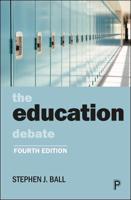Publisher's Synopsis
The interest rates that borrowers pay on federal student loans made through the William D. Ford Federal Direct Loan program are specified in statutory language of the Higher Education Act of 1965, as amended. Numerous proposals have been made during the 113th Congress that would affect the interest rates that borrowers pay on student loans made through the Direct Loan program. These include long-term proposals to establish a new interest rate structure for all Direct Loans made during future years, and short-term proposals to temporarily extend the authority to make Direct Loans at the rates currently in effect. For the past two years, one type of loan-Direct Subsidized Loans-have been made with a fixed interest rate of 3.4%. Absent congressional action, Direct Subsidized Loans made on or after July 1, 2013, will be made with a fixed interest rate of 6.8%. Several of the long-term proposals would amend the Direct Loan program to index student loan interest rates to market indices, such as the rate on 10-year Treasury notes. Some policy options would establish a market-indexed, fixed interest rate structure, while others would establish a market-indexed, variable interest rate structure. In his FY2014 budget, President Obama proposed a market-indexed, fixed interest rate structure that would apply to Direct Loans made in future years. On May 23, 2013, the House passed H.R. 1911, which would establish a market-indexed, variable interest rate structure for new Direct Loans. S. 1003 would establish a new market indexed, fixed interest rate structure for Direct Loans made in future years. Other bills would make short-term changes to student loan interest rates and would affect only Direct Subsidized Loans. S. 953 would extend for two years the authority to make Direct Subsidized Loans with a fixed interest rate of 3.4%. S. 897 would set the borrower interest rate on new Direct Subsidized Loans made only during the upcoming federal student aid award year at the Federal Reserve discount window primary credit rate. This report describes and analyzes student loan interest rate proposals that have been made in the 113th Congress to establish new policies for setting the interest rates that borrowers will pay on loans made through the Direct Loan program. The report compares and contrasts selected loan interest rate policy options and provides information on proposed student loan interest rate structures, projections of future interest rates, and estimates of future costs to the government. The report also presents estimates of borrower repayment amounts associated with the different interest rate proposals based on case simulations for three types of typical borrowers: undergraduate dependent students, undergraduate independent students, and parent borrowers. Finally, the report highlights some of the perennial tensions that often arise when student loan interest rates are debated. Should federal student loan programs provide below-market or fair market interest rates to borrowers? What value is ascribed with providing borrowers predictable fixed monthly payments as opposed to payments that may vary in accordance with market conditions? To what extent should the federal government seek to subsidize loans or borrower repayment and for what subset of borrowers should subsidies be available?









